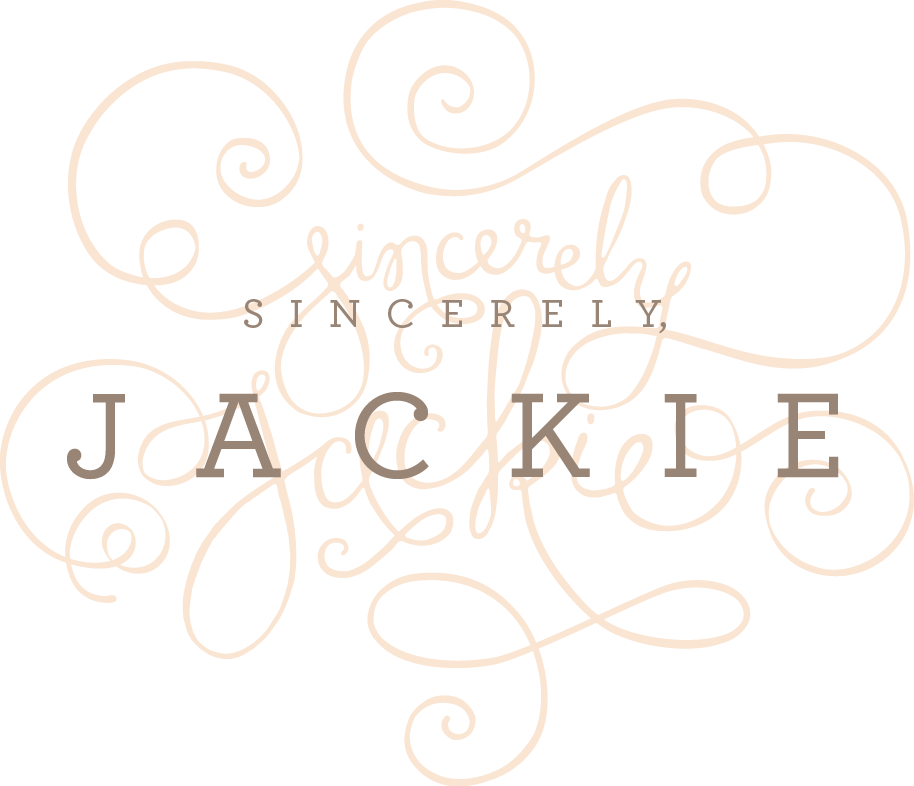Stationery 101: Printing White Ink on Dark Paper
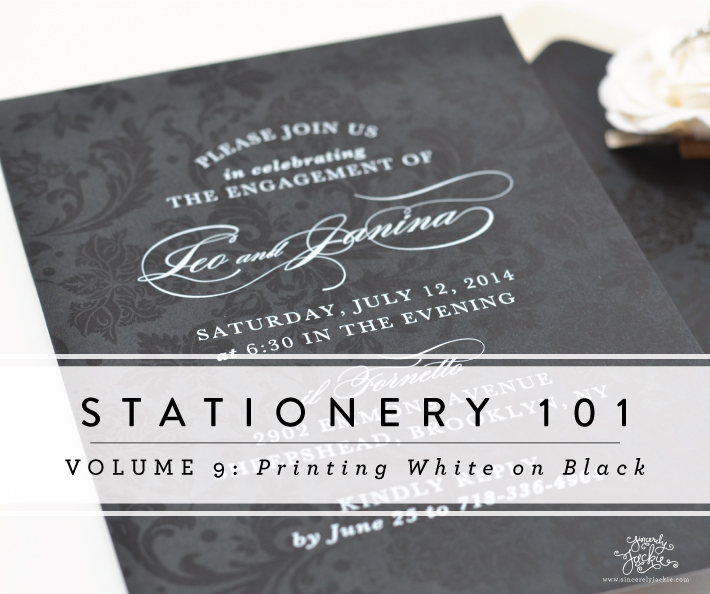
Now that we're all familiar with the common print methods (Letterpress 101, Foil Stamping 101, Engraving 101 and Digital/Flat Printing 101), I'm ready to start diving into some printing nuances in more detail. Today I'm going to share what I've learned about printing the elusive combination of white on black.
Crisp white printed on magnificent black paper is to. die. for. Alas, like almost everything that is incredibly gorgeous, it's not easy to achieve. Printing white letterpress on black paper is nearly impossible - the letterpress ink is transparent, like watercolor, so it doesn't give the desired crispness. Regular digital printing is not possible on dark paper - since "white" ink is usually the absence of ink (think of your home printer and how it prints "white"). When trying to achieve white on black (or any dark paper) the best options are usually white foil, white engraving, a specialty white toner, or white calligraphy. (editor's note: my incredible talented printer friend, Shayna, mentioned in the comments that it IS possible to print white letterpress ink on black paper, so long as the paper is coated, and/or if you add a little silver ink to the white. I love that tip, thank you Shayna!)
Foil and engraving are wonderful options when trying to print white on black for invitations. Yes, it is bit more of an investment than traditional letterpress printing on white paper, but the finished product is oh so dreamy. I haven't yet had the opportunity to design white engraving or foil on black paper, so I don't have any photos to share. If you're considering this for your wedding invitations and need a designer, PICK ME, PICK ME! I am just dying to bring it to life.
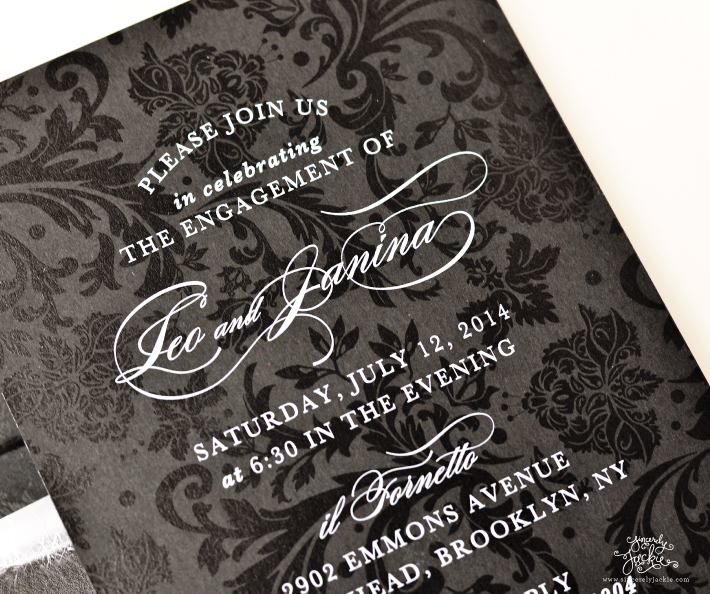
I've also so lucky to work with an incredible printer who is able to digitally print white ink on dark paper, through the use of a top-secret white toner. These engagement invitations were a dream come true for me to work on, and one of my favorite projects ever. However, thicker papers can't be printed on, which leaves hand-duplexing (sticking two sheets of paper together) as the only option to achieve thick, luxurious papers. The duplexing negates any cost savings that may have happened with the digital printing. Still, I do love this option, especially for the most difficult dilemma in white-on-black printing: Envelopes.
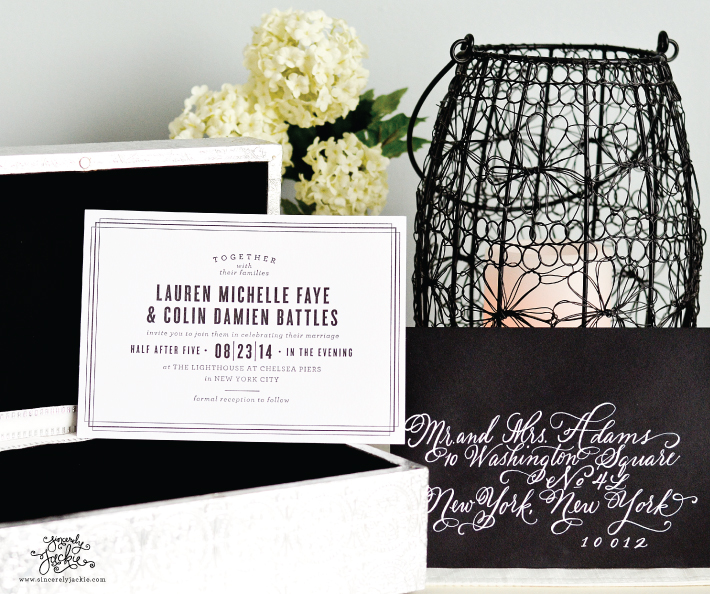

*calligraphy by Everly Calligraphy
Black envelopes make my heart skip a beat. Three beats, maybe. They make your heart skip a few beats too, I'm sure. The difficulty with printing white addresses on dark envelopes is that you cannot use foil or engraving, since each envelope is a different guest address. Calligraphy is the most readily available option if you've got your heart set on blank envelopes for your invitations. I'm not going to complain about that - calligraphy is the pièce de résistance in the world of pretty paper. If you don't have the budget for calligraphy, you could use a rubber address stamp with a white ink pad for the return address and reply envelopes. Better yet - you can purchase the stamp from a calligrapher, so it still feels like custom calligraphy. The cost savings from the stamp could be used towards the calligraphy for the guest addresses.
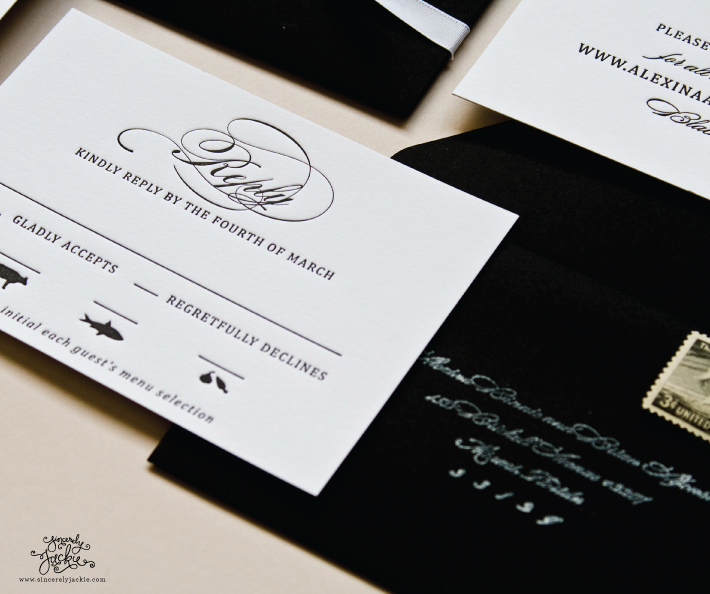
Flat printing, with white toner, may be hard to find, but it is an option for printing white addresses on black envelopes. I offer it as an option to my clients, and it's something I'm really excited to be able to do. I'm printing white addresses on deep navy blue envelopes this week - swoon!
So there you have it - the nuances of printing white ink on black paper, for both your invitations and your envelopes. If you have your heart set on a white-with-black design, rest easy - it IS possible! And I'd love to work with you on it!
Thank you for joining me in another Stationery 101 post! Don't forget to catch up on past Stationery 101 topics here, such as Letterpress 101, Foil Stamping 101, and Engraving 101.
Sincerely,

